Red Alert for Corporate DEI Programs: Pride Month Attacks Continue What Insurrectionists Started


“Stop the Steal” and white supremacist protests at the Colorado State Capitol, Denver, winter 2021
The ongoing U.S. Congressional hearings have provided the American public with hard evidence about the people who organized a violent insurrection against the U.S. government on January 6, 2021. That attempt failed by the narrowest of margins, but Pride Month has now become a proving ground and recruiting tool for the next effort. More violence is all but certain to come unless corporate leaders do their own organizing, and expand their DEI efforts outwards into community action and political force.
Violence has already come for your DEI program
To the extent that leading brands and local businesses publicly support Pride Month events, the violence has already come to their doorstep.
Last week, 30 men reportedly affiliated with white supremacist organizations attempted to infiltrate Pride festivities in Coeur d'Alene, Idaho with violent intent. An alert citizen and quick action by law enforcement thwarted their plan, but now the officers themselves have become the targets of white supremacist threats.
The Coeur d'Alene incident was not a one-off. White supremacists have been purposefully grooming anti-LGBTQ sentiment for more than a year, beginning with a fresh spate of state based anti-trans legislation that followed closely on the heels of the January 6 insurrection.
Editor's note: Be sure to subscribe to our Brands Taking Stands newsletter, which comes out every Wednesday.
While state legislatures continue to focus hate and bigotry on vulnerable trans youth, an organized effort to ban LGBTQ-themed books from school and local libraries across the nation has also gotten under way. The Guardian and other media have linked the effort to high-profile conservative funders including Leonard Leo of the Federalist Society, who is credited with securing the extremist conservative majority on the U.S. Supreme Court.
Mainstream media is taking notice of Pride Month violence
The upsurge in anti-LGBTQ violence has not escaped the notice of mainstream media. On June 17, Ben Collins and Doha Madani of NBC News wrote a long form article detailing the attacks. They took particular note of the attackers’ focus on transgender and drag queen events. Not coincidentally, some of these events routinely take place in libraries, in the form of the popular “drag queen story hour” programs.
“Inundated with threats during Pride Month, LGBTQ+ rights advocates and allies have been forced to cancel events and involve local law enforcement authorities after a group of white nationalists were arrested outside a Pride event in Coeur D’Alene, Idaho,” they wrote.
The two reporters interviewed California state Senator Scott Wiener, who observed that “there is a very orchestrated network of right-wing accounts and personalities to coordinate on whatever the current attack message is and who’s going to be targeted. And they have an army of social media trolls who amplify their messages…It’s a very orchestrated attack machine.”
“Far-right influencers and militias have been particularly focused in the last month on “Drag Queen Story Hour” events, which have been hosted at libraries throughout the U.S. since 2015,” Collins and Madani observed.
The white supremacist connection
Earlier in the month, Amanda Seitz of AP News also took note of the organized nature of ginned-up social media focusing on LGBTQ and other vulnerable communities.
“White nationalists and supremacists, on accounts often run by young men, are building thriving, macho communities across social media platforms like Instagram, Telegram and TikTok, evading detection with coded hashtags and innuendo,” she wrote.
“Their snarky memes and trendy videos are riling up thousands of followers on divisive issues including abortion, guns, immigration and LGBTQ rights,” she added.
Seitz referred to a Department of Homeland Security warning posted on June 7, in which the agency assessed that emotional overload and entitlement are in play.
“Threat actors have recently mobilized to violence due to factors such as personal grievances, reactions to current events, and adherence to violent extremist ideologies, including racially or ethnically motivated or anti-government/anti-authority violent extremism,” DHS warned.
Don’t just stand there: do something
Historians and political observers have long warned that the raw emotions and personal entitlement are effective weapons in the hands of power-hungry authoritarians. They have raised serious concerns that the rise in white supremacist violence, and the willingness of Republican office holders to dismiss or outright support violence, are already leading to long-term political instability including the risk of street violence, assassination, bombings and other hallmarks of a collapse in the principles of democratic representation and compromise.
If you’re still having trouble taking any of this seriously, consider that the seeds of a false flag conspiracy theory involving the nation’s food supply have already blossomed into full effect, thanks to Fox and other right-wing echo chambers.
It doesn’t have to happen. Pride Month has provided white supremacist organizations with opportunities to grow their movement, but it also provides business leaders with a solid platform for pushing back against right-wing hysteria. Top brands and local businesses alike can and should ramp up their Pride activities and mobilize their employees, clients, customers and communities to rally in support of their local Pride Month events.
Business leaders can also ramp up their support for established human rights organizations, and they can seek opportunities to support new local and grassroots efforts that push back against book bans and other white supremacist activities.
Above all — once and for all — business leaders have to stop providing financial support for Republican candidates and office holders. They have to stop treating the Republican and Democratic parties as two sides of the same politics-as-usual coin. The Republican Party has been hijacked to serve the purposes of authoritarian rulers who seek to attain and hold power regardless of the rules and principles of democratic government, and they have already assembled an army of violent thugs to serve their purpose.
Business leaders can either sit back and let the violence continue to unspool, or they can do something about it. There is no in between, any more.
Image credit: Colin Lloyd via Unsplash
How Hulu’s Fire Island Offers a Jane Austen and Queer Take on DEI
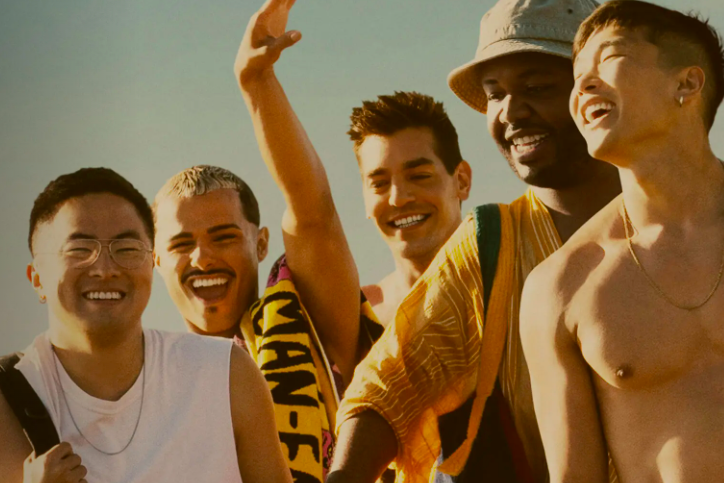
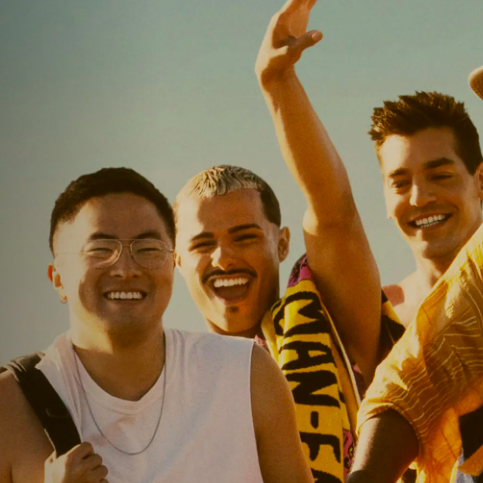
Being told to watch a rom-com in order to understand what’s going on with diversity in the workplace probably wasn’t on your employee engagement bingo card. But if you want a snapshot of what your employees might actually be thinking about what’s going on in the office, virtual or otherwise, then watch Fire Island, released earlier this month on Hulu.
Epic comedian Joel Kim Booster wrote the screenplay and stars in the film. It’s another movie based on, yes, the plot driving Jane Austen’s Pride and Prejudice, only the property in question is in danger of being sold or even foreclosed, not entailed as there is no male heir; unlike Austen’s Hertfordshire, there’s no St. Albans Abbey, but there is an Ice Palace; and instead of balls at which polite society waltzes in poofy outfits and tut-tuts over status, there are tea dances where the tut-tutting is over six-pack abs and who does or doesn’t belong.
So why stream this film, which also stars SNL’s Bowen Yang? The heartache and resentments mixed in with plenty of light and hilarious moments really aren’t all that different from what might be going on at your organization: It’s just that there’s a very good chance your workplace has much fewer light and hilarious moments. Caution: If you haven’t streamed the movie, there are some spoilers to come.
Elizabeth Bennet, meet Joel Kim Booster
Let’s start with Booster’s Noah (Austen’s Elizabeth Bennet), who’s smart and usually nails it when it comes to observing what’s going around him. But his harsh comments often get in the way, and if he worked for a company, his HR file would probably be thicker than his employer's code of ethics.
Howie as second-fiddle Jane Bennet
Then there’s Yang’s Howie (Austen’s Jane Bennet, Elizabeth’s sister), who’s far more low-key than Noah, and is probably a more reliable and dedicated employee, only that he feels so beaten down for being overlooked for his accomplishments (and, sadly, for what he perceives as his looks).
Like Austen’s Bennet sisters, Noah and Howie are close, only with one twist: The first, obviously, is that they are both Asian American, and the bond started to form when they worked together years earlier at bougie Sunday brunches, where they served bottomless mimosas to entitled and racist white patrons. Yes, now you’re starting to get it: You’ve got employees that haven’t been told as such explicitly, but they’re being typecast, constantly expected to act a certain way due to their background, but the rewards and recognition aren’t coming their way.
Now, the sparks are flying: Will vs. Noah is Elizabeth vs. Darcy
Added into the mix is Conrad Ricamora’s Will (Austen’s Fitzwilliam Darcy), both of whom are successful (well, one was born into wealth, the other earned it through hard work). In the case of the uptight Will, he’s not too keen on Noah, and for fans of Austen and the movies she inspired, here’s where it gets fun.
Just as Darcy describes Elizabeth with the backhanded, “She is tolerable; but not handsome enough to tempt me; and I am in no humor at present to give consequence to young ladies who are slighted by other men,” Will’s first impression of Noah is summed up with a biting comment that Booster’s character is “not hot enough to be that annoying.”
But just like the protagonists in Austen’s classic, as Darcy and Elizabeth slowly become closer, so, too, do Noah and Will, as they realize the assumptions they had made about each other after meeting for the first time were way off-base.
Fire Island may give you a clue as to what your employees really think about the company
Fine, call this out for being a stretch, but if they worked within a U.S.-based company, Will could be the company’s chief sustainability officer with Noah running diversity programs: And both are tired about the company’s proclamations about ESG performance while, in truth, hiring people of color has stalled, while emissions are more the result of masterfully cooking the carbon accounting books instead of meaningful GHG reductions.
Editor's note: Be sure to subscribe to our Brands Taking Stands newsletter, which comes out every Wednesday.
As for matchy-matching Booster's characters to Austen's, we're almost done — just watch the film and have fun figuring out everyone else.
But, we have to mention Dex, the hot guy (among many in the movie, self-assumed or otherwise) in Fire Island who wins some sympathy at first, but like Austen’s George Wickham, this fellow has a long history of nefarious behavior. It turns out that the problem with Dex isn’t his OnlyFans account, but that he exploits guys — and is about as morally bankrupt as Wickham, who had a long history of scamming people out of their money. Dex is like the C-suite "bro" executive who Noah and Will would come to despise, as in Dex’s case, the problem isn’t that he uses the company’s digital assets to waste time buying Tom Brady swag on eBay; instead, he mouths off about women, guys who don’t look like him and climate science: And all the while, he’s the company’s public-facing figure touting all of its good work on ESG and DEI.
Dust off that old paperback version of Pride and Prejudice, fire up Hulu on your Fire TV, and we’ll leave the rest going down the rabbit hole of “who would be who at my company” to you. Bottom line: If you’re not seeing the facial expressions and signs of exasperation of the characters of Fire Island in how your own employees interact with you and each other, there’s a good chance you’re not paying attention.
Sidebar: As for Fire Island — as in the real place, which was where much of this movie was actually filmed — well, here’s your climate change reminder: There’s a good chance that rising sea levels could put the popular resort area under water in 50 to 60 years.
Image credit: Hulu pressroom
It’s Official: Oil Giants Seek New Revenue in Green Hydrogen
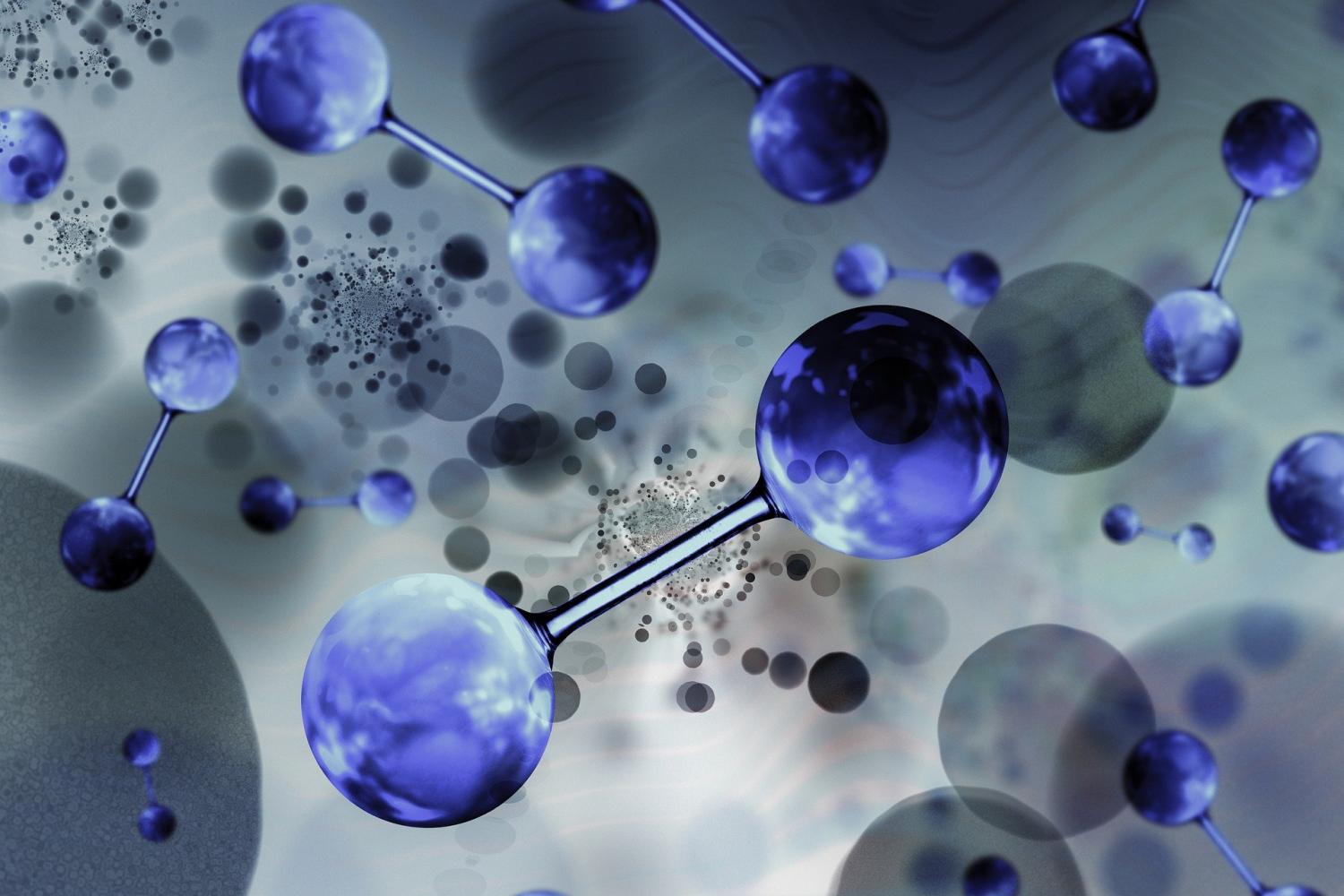

The green hydrogen trend has been sparking interest among leading oil and gas stakeholders for the past couple of years, and now it looks like the floodgates are open. The baby-step phase is coming to an end. Serious money is in play, at a scale needed to hasten the transition to a more sustainable low-carbon future.
Spotlight on green hydrogen
Bloomberg covered the latest green hydrogen news earlier this week. Under the headline, “Big Oil Bets That Green Hydrogen Is the Future of Energy,” reporters Will Mathis, Laura Hurst and Francois De Beaupuy noted that “major oil companies are finally planning the kind of large-scale investments that would make green hydrogen a serious business.”
“They’re chasing a very particular vision of a low-carbon future — multibillion dollar developments that generate vast concentrations of renewable electricity and convert it into chemicals or clean fuels that can be shipped around the world to power trucks, ships or even airplanes,” they added.
To be clear, it is important to distinguish green hydrogen from other terms.
Most of the activity in the green hydrogen area involves deploying wind and solar power to generate electricity for electrolysis systems, which push hydrogen gas from water.
Biomass, biogas and organic-rich wastewater are other emerging renewable resources for green hydrogen.
Harvesting hydrogen from recovered, synthetic resources, such as industrial waste gas or recycled plastic is another emerging area. It does not fit the consensus on “green,” as a term applied to renewable resources. However, recovered resources can be a more sustainable alternative to the conventional means of producing hydrogen, which has long relied on virgin natural gas and, to a lesser extent, coal.
What’s the matter with “clean” hydrogen?
In contrast to the burst of activity around green hydrogen, fossil energy stakeholders have struggled to make “clean” hydrogen happen.
“Clean” hydrogen generally refers to natural gas paired with carbon capture systems. That approach may have passed muster years ago, but it is out of step with the demands of the 21st-century supply chain.
Hydrogen is widely used throughout the global economy, in agriculture, toiletries and pharmaceuticals as well as manufacturing. Fresh demands are being placed on the hydrogen supply by the transportation sector, as the fuel cell industry grows alongside interest in hydrogen and ammonia fuels.
Leading brands and other manufacturers are scrambling to decarbonize themselves upstream as well as downstream. Steelmakers, for example, are beginning to invest in green hydrogen systems because auto makers are beginning to demand “green” steel, in accord with the growing consumer demand for low-carbon products.
The global supply of green hydrogen is minuscule now, and costs are high relative to conventional hydrogen from fossil sources. However, as economies of scale kick in for green hydrogen, and the supply increases, the appeal of fossil sources — and their heavy environmental baggage — fades away.
The U.S. could be a green hydrogen leader
Much of the shovels-in-the-ground activity is taking place overseas, but the U.S. is poised to catch up and become a green hydrogen leader in the global marketplace.
“Owing to its large refining and chemical sectors, the United States is already one of the largest producers and consumers of hydrogen,” the International Energy Agency pointed out in a recent overview of the global hydrogen market.
The IEA also noted that, due to its sprawling network of pipelines and other infrastructure, the U.S. has a running start on the green hydrogen trend, compared to parts of the world where renewable resources are abundant, but transportation infrastructure is lacking.
Proposals for the creation of green hydrogen “hubs” have been emerging in a number of U.S. states in recent months, from California and Texas to an ambitious tri-state initiative launched by Connecticut, New York and New Jersey.
Another leading example in the U.S. is the “ACES” Advanced Clean Energy Storage project in Utah, which leverages an unusual underground formation for bulk green H2 storage.
As one sign of growing momentum for the green hydrogen movement in the U.S., last April the Department of Energy (DOE) revived its long-dormant Loan Programs Office to issue a loan guarantee of $504.4 million for ACES, citing its massive scale and innovative use of electrolysis.
“Advanced Clean Energy Storage will capture excess renewable energy when it is most abundant, store it as hydrogen, then deploy it as fuel for the Intermountain Power Agency’s (IPA) IPP Renewed Project — a hydrogen-capable gas turbine combined cycle power plant that intends to incrementally be fueled by 100 percent clean hydrogen by 2045,” the Energy Department explained.
The DOE is also promoting the hydrogen hub trend in other regions of the U.S. with a new $8 billion round of competitive funding through the 2021 Bipartisan Infrastructure Law. The program includes a carveout for natural gas, but it also mandates funding for at least one green hydrogen hub deploying renewables, and another hub deploying electricity from nuclear power plants.
Oil and gas giants to the rescue?
Fossil energy stakeholders have much work to do before they can claim credit for slowing down, let alone reversing, the catastrophic damage wreaked under a high-carbon economy.
Still, green hydrogen is a good place to start. The renewable energy angle makes this source of fuel a logical next step for oil and gas giants that are already investing in wind or solar energy.
Shell and Equinor, for example, are participating in the EU’s sprawling NortH2 project, which leverages offshore wind power in the North Sea. Shell has also been participating in exploratory talks for a green hydrogen hub in Texas.
TotalEnergies is in the mix with a 10-year, $50 billion green hydrogen partnership with Adani Group. In other recent news, BP announced a 40.5 percent stake in the AREH green hydrogen project in Australia, which is billed as one of the largest in the world.
Of course, many outliers still remain. Chevron and ExxonMobil, for example, are leaning on natural gas with carbon capture. Nevertheless, the green hydrogen die has been cast. Corporations that don’t fit the mold risk being left out in the cold as the global supply chain shakes free of the fossil energy burden.
Image credit: Gerd Altmann via Pixabay
Consumers Are Ready to Get Reduce, Reuse and Recycle Right


The tide is turning on how Americans view responsibility for plastic pollution. This year’s updated survey on plastic waste and consumption from WWF found that more than 50 percent of consumers want businesses to be held accountable for how they reduce and recycle that waste. This shift in attitudes toward prioritizing the role of plastic producers in pollution should finally signal to policymakers that this is a problem that needs to be tackled at its source.
There’s a reason the phrase goes reduce first, reuse second and recycle last. Yet, by putting the onus on the consumer instead of the producer, the first two have been all but forgotten in favor of a largely ineffective market-based recycling system. Until recent shifts in consumer sentiments, manufacturers have had little motivation to reduce plastic production, especially packaging. And why should they? Packaging can act as advertising — the bigger and more colorful it is the more attention it can draw away from competitors on the same shelf — and as a theft deterrent, such as with clamshells.
So not only does recycling after the fact instead of reducing at the source make no logical sense, but successful recycling is dependent on a whole range of factors. Consumers have to care enough not only to recycle but to educate themselves about how to do so correctly. Contamination from unwashed food containers leads to whole batches of recyclables being thrown out. "Wishcycling" items that are not actually recyclable can wreak havoc on sorting machines, require extra labor to resolve and add to more contamination in the system.
There also has to be a market for all of those recyclables — somewhere for them to go after they are collected. The U.S. lacks an internal recycling infrastructure that can handle the sheer volume produced, which historically meant selling our recycling to China. Except that doesn’t mean the materials were all recycled even after reaching the other side of the ocean. Thirty percent of all recyclables (not just plastics) sold to China were contaminated and unable to be processed, effectively exporting U.S. waste and pollution to the Chinese landscapes and seascapes. The logistics of that all changed in 2018 when China switched up its standards and was no longer willing to accept most plastic. The U.S. tried to send its waste to other Asian countries, including Thailand, Vietnam and Malaysia after that. However, those nations’ governments quickly instituted bans of their own after communities were inundated.
Still, the U.S. continues to ship off over a million metric tons of plastic each year. So, where does it go now? Cambodia, Ethiopia and Senegal are a few examples of countries that are being overwhelmed by the deluge, of which it is estimated that 20 to 70 percent is actually trash. Once the plastic is overseas much of it is burned or ends up in a landfill, whether it is actually recyclable or not. The environmental and health costs of this are not only staggering but point to our present system of curbside recycling as more feel-good for American consumers than it is effective.
In its State of the Planet report from 2020, Columbia University quoted Stephanie Kersten-Johnston, an adjunct professor at their Sustainability Management Master’s Program, as saying: “It will only ever make economic sense to recycle a small subset of materials, which means we will have to look beyond recycling alone to solve for our broader waste. We need to tap into new business models that allow us to reduce our consumption in the first place, and re-use materials where we can.”
With only 9 percent of plastic produced ever having been recycled, it’s obvious that we are approaching the problem from the wrong direction. Policymakers must deal with the overwhelming amount of plastic being made at the source by encouraging a huge reduction in production and a transition to reusable containers and products. It is time for producers to take heed of shifting consumer opinions and not only reduce the amount of waste they produce but look towards making as much packaging as possible reusable. This creates an opportunity for new ways of doing business, including refill shops and returnable container programs — the latter of which are viewed favorably by 50 percent of survey respondents. The fact that only 20 percent viewed them negatively, begs the question: why aren’t more widespread programs already in the works?
Image credit: A DLT via Pexels
Employee Activists Hit Brick Wall at SpaceX

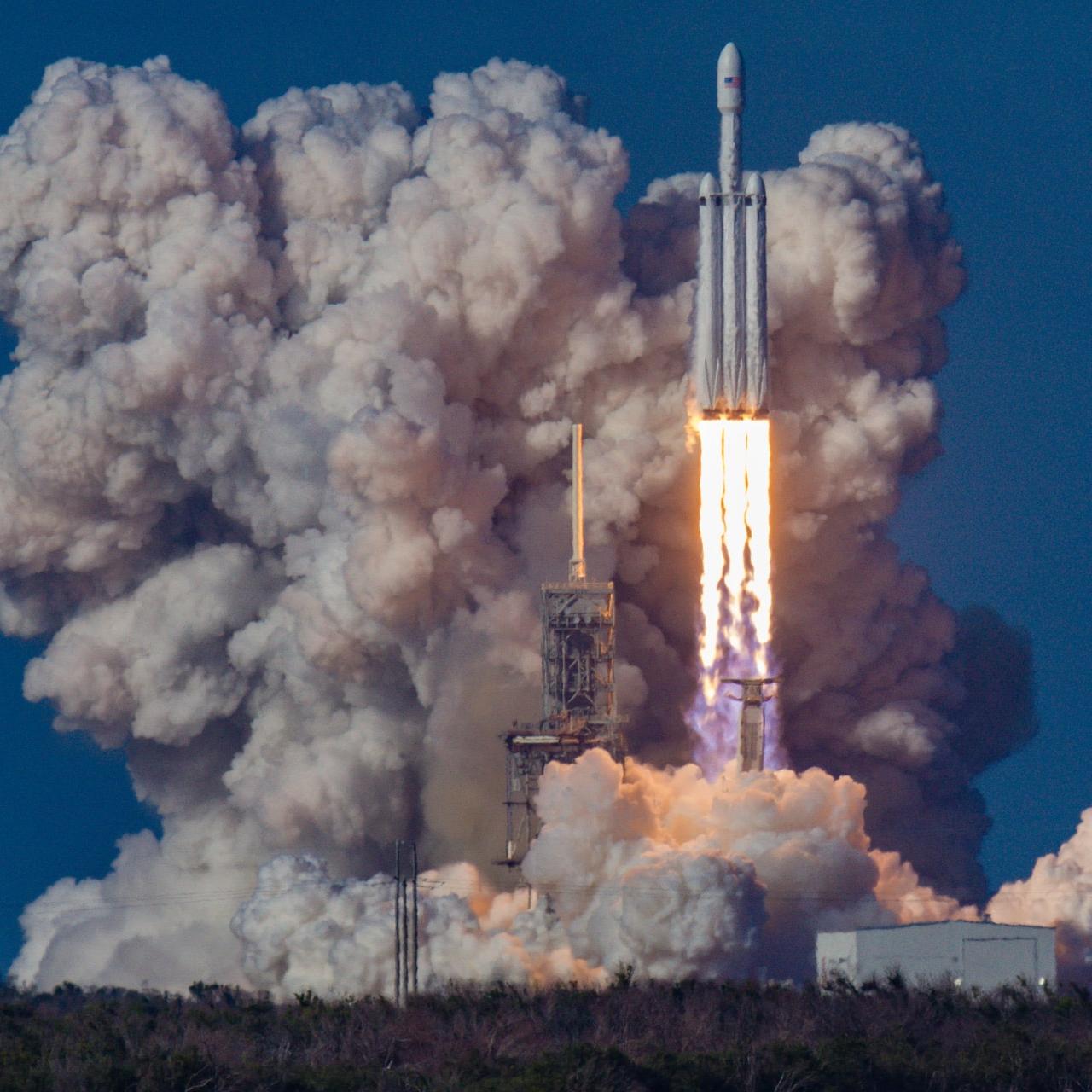
Leading tech companies have been fending off the reputational damage that can occur when their own employees point out contradictions between their mission statement and their actual track record on climate action, sexual harassment, human rights and other concerns. Now SpaceX is taking a turn on the hot seat. However, instead of taking steps to put out the fire, as some have done, SpaceX has driven itself into risk territory, facing the prospect of losing out in the race to attract — and retain — top talent.
Employees warn SpaceX on behavior
The dustup began last Wednesday, when The Verge published the contents of an open letter to SpaceX management, posted on an internal Microsoft Teams channel. According to The Verge’s reporter, Loren Grush, more than 2,600 SpaceX employees are on the channel. In a follow-up story, Grush reported that more than 400 employees signed the letter before it was taken offline, less than two days after it was posted. The Verge also cited a source who claimed that many employees used other means to voice support for the letter without facing the risk of being fired.
The letter was composed by a group of employees concerned about SpaceX CEO and Chief Engineer Elon Musk’s habit of hurling insults and other embarrassing comments on Twitter, and the impact of his behavior on their company’s reputation. They were especially concerned over his dismissive response to sexual harassment allegations that recently surfaced against him.
“It is critical to make clear to our teams and to our potential talent pool that his messaging does not reflect our work, our mission, or our values,” the authors warned.
The authors of the letter also raised substantial concerns over the company’s mishandling of harassment reports.
“To be clear: recent events are not isolated incidents; they are emblematic of a wider culture that underserves many of the people who enable SpaceX’s extraordinary accomplishments,” they wrote.
Taking a detour in the race for top talent
The authors of the letter emphasized that the behavior of SpaceX management, up to and including its CEO, was putting the company at risk by undercutting its ability to attract and retain top talent.
“SpaceX’s current systems and culture do not live up to its stated values, as many employees continue to experience unequal enforcement of our oft-repeated ‘No Asshole,’ and ‘Zero Tolerance,’ policies,” they advised, later adding that “The collaboration we need to make life multiplanetary is incompatible with a culture that treats employees as consumable resources.”
Naming a key DEI policy with an expletive is both insulting and dismissive, and the letter notes that the terms of the policy were never outlined in detail.
“Is the culture we are fostering now the one which we aim to bring to Mars and beyond?” the authors conclude.
A giant step backwards for free speech and employee activism at SpaceX
Considering that Musk’s interest in free speech has ramped up during his negotiations to purchase Twitter, the response of SpaceX to the letter was either extremely ironic, extremely hypocritical, extremely dangerous or all three.
As reported by Reuters and other media, SpaceX CEO Gwynne Shotwell summarily fired at least five employees, who were presumably responsible for composing or circulating the letter.
The threat of being fired without warning is certainly one effective way to curtail employee speech, but Shotwell went far beyond that.
In a classic case of victim-blaming, Shotwell wrote: “The letter, solicitations and general process made employees feel uncomfortable, intimidated and bullied, and/or angry because the letter pressured them to sign onto something that did not reflect their views.”
“We have too much critical work to accomplish and no need for this kind of overreaching activism,” she added.
Those few, simple lines reflect an entire opus of Orwellian, white supremacist thinking, in which intolerable behavior is used as a weapon against those who fight intolerance. The theme of hurt feelings is the common thread running through a series of phony controversies bouncing around the white supremacist echo chamber, raising a cacophony of lies over voter fraud, critical race theory, diversity training, trans rights and other matters that have an impact on corporate diversity, equality and inclusion programs.
Intolerance, entitlement, violence
If the language deployed by Shotwell sounds familiar, that is no accident.
It is the same, disingenuous “diversity” argument weaponized by Mark Zuckerberg in his public defense of Facebook board member Peter Thiel, who played an instrumental role in the 2016 campaign of former president Donald J. Trump.
“We care deeply about diversity. That's easy to say when it means standing up for ideas you agree with. It's a lot harder when it means standing up for the rights of people with different viewpoints to say what they care about. That's even more important,” Zuckerberg wrote on an employee message board in October 2016 (emphasis added).
Whether intentionally or not, in that brief note Zuckerberg raises feelings – “what they care about” — to the level of a sacrosanct, inarguable truth that is more important than any moral, ethical, legal or constitutional judgement over what is actually being said, or done.
From there, it is a straight line to the eruption of post-election emotion, entitlement and physical violence that culminated in the almost-successful insurrection of January 6, 2021, and which continues to this day in the attacks on Pride Month events across the nation by organized groups of white supremacists.
The previous insurrection failed, but the Pride Month attacks have become a proving ground and recruiting tool for those bent on succeeding the next time.
Companies that ignore the warning signs – or which, like SpaceX, argue for the entitlement of personal feelings – need to stop suppressing employee activists and start paying attention.
Image credit: Bill Jelen via Unsplash
We Just Ran Period Workshops in Schools in South Africa & Nigeria. Here's What Happened.


In December 2018, Global Citizen Festival: Mandela 100 came to Johannesburg. It gave us thrills, great music, and most notably, major commitments in the fight toward ending extreme poverty. Among these, American actor, director, producer, and screenwriter, Tyler Perry committed to donating $1 million to support 50 young changemakers across the African continent.
It was the birth of the Global Citizen Fellowship Program, powered by BeyGOOD, which provides young people with opportunities to gain experience working on social impact projects through a paid year-long fellowship.
So far, since its launch in 2019, the fellowship program has empowered 35 Africans — including the three of us — between the ages of 21-25 with the skills and tools we need to thrive — not only during our time with Global Citizen, but in any and all future endeavours. The recipients of this fellowship opportunity, powered by BeyGOOD, also do not shy away from giving back to the communities that raised us.
In May this year, the young people that make up the fellowship's third cohort, hailing from Nigeria and South Africa, embarked on a project — which we named “We Can. Period.” — to raise awareness on the issue of period poverty, so common here in Africa.
As part of the “We Can. Period.” project, we brought workshops to schools in Lagos and Johannesburg in the week of Menstrual Hygiene Day on May 28. In alignment with Global Citizen’s 2022 campaign to Empower Girls NOW, the key objective for our project was to support girls to better manage their periods, provide free sanitary products, particularly more eco-friendly period products such as reusable cloth pads and menstrual cups, and advocate for better menstrual health education and policies.
Partnerships and Donations
To support the project, we partnered with UNFPA, the United Nations Population Fund, in Nigeria, and the Menstrual Project and Palesa Pads in South Africa to help leverage collective efforts to drive real and sustainable change in the Lagos and Johannesburg communities. The UNFPA Nigeria team provided 100 reusable sanitary pads and 60 yards of fabric for the girls who participated at the school workshop.
Meanwhile, the Menstrual Project donated over 200 sanitary products, and gave the schoolchildren a 45-minute workshop based on a comprehensive curriculum that consisted of period poverty, menstrual health and management, and more. The fellows in South Africa collected 100 sanitary pads to donate to the schools on the day of the workshop, and the remaining pads will be provided to the school in the coming months. Palesa Pads also gave a great interactive demonstration on using reusable cloth pads that the children absolutely loved.
Quiz Action
As a Global Citizen, you know the importance we place on taking action. So, as part of our project, we also launched a pan-African quiz that you can join us in taking, A Period Should Not Be a Full Stop in a Girl’s Life, Find Out Why. The digital quiz action helps Global Citizens learn more about the severity of period poverty as a public health, human rights, and socio-economic issue globally.
The Workshops — South Africa and Nigeria
Our first workshop took place on May 25 at Aiyetoro Grammar School in Lagos, Nigeria, where the fellows were joined by Global Citizen Champions of Change, Kiki Mordi and Seyi Oluyole. Talking to the students, both Mordi and Oluyole emphasised the importance of good menstrual health management and also the role that boys can play in supporting girls during their period.
“Boys, remember that you’re supposed to be a support system for your classmates,” Mordi said during her session. “If you see any girl struggling, ask for ways you can help.”
Oluyole’s session focused on her personal journey and experience with menstrual health. During her session, called Period Poverty: My Personal Journey, she talked about growing up in a rural community in Lagos with limited access to sanitary products.
“I was once like you,” she said. “If I can make it to where I am today, you can too.”
Students were also taught how to use reusable sanitary pads, calculate their menstrual cycle, and advocate for better hygiene facilities in a series of sessions coordinated by the BeyGOOD fellows. At the end of the workshop, sanitary products were handed out to the students, including the reusable sanitary pads donated by UNFPA, and a pad bank was set up at the school.
A couple of days later in South Africa, our second workshop took place, at Yeoville Community School in Johannesburg on May 27. As well as the schoolchildren and BeyGOOD fellows in South Africa, Global Citizen Champions of Change Penny Lebyane, Amonge Sinxoto, and Patricia Kihoro also joined the workshop in person; while Champions of Change Takkies Dinwiddy and the “Minister of Menstruation'' Candice Chiwa supported the #WeCanPeriod campaign digitally on their social media platforms.
During the workshop, the Menstrual Project asked the grade 4 and 5 girls (aged 10-12 years old) what they have heard about periods. “Bad, embarrassing, disgusting”, were just some of the responses from these girls. One student said: “I talked to my dad about my periods, and he told me this is something I have to talk to my mom about.”
The girls were then told that the negative things they’d heard about periods were all part of the wider issue of stigma and taboo connected to menstruation, which often leads to a sense of shame or embarrassment — particularly for younger girls and women — when talking about their periods. It can also lead to the idea that periods are somehow not normal or are dirty, when they’re just a natural part of life.
This provided a great segue for Simphiwe Mahlangu from Palesa Pads, who explained more about using reusable cloth pads and how to have a healthier relationship with your periods and your body. Our Champions of Changes, Lebyane and Kihoro, then spoke of their own personal experiences with menstruation and why they advocate to combat period poverty.
“When I was advocating for period poverty in Kenya [as a part of the movement #TrekforMandela], they were surprised to learn that it is also such a problem in South Africa,” said Lebyane. “And I was like, ‘Yes!’, so that is why I was climbing Kilimanjaro. To create awareness.”
Previously published in the 3BL Media newsroom.
Image credit: Global Citizen
Leave the Marketing Behind for This and Any Future Juneteenth and Focus on DEI
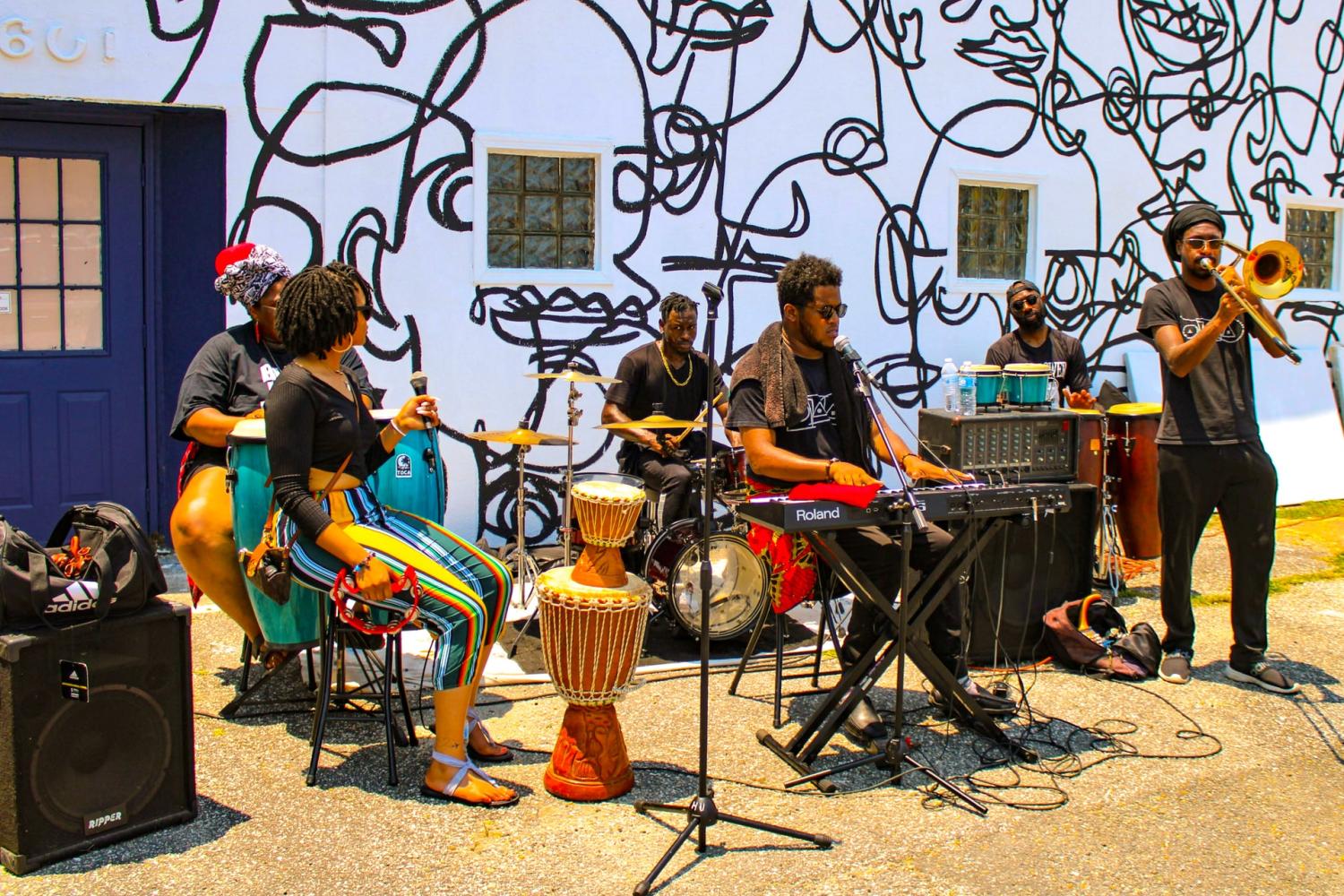
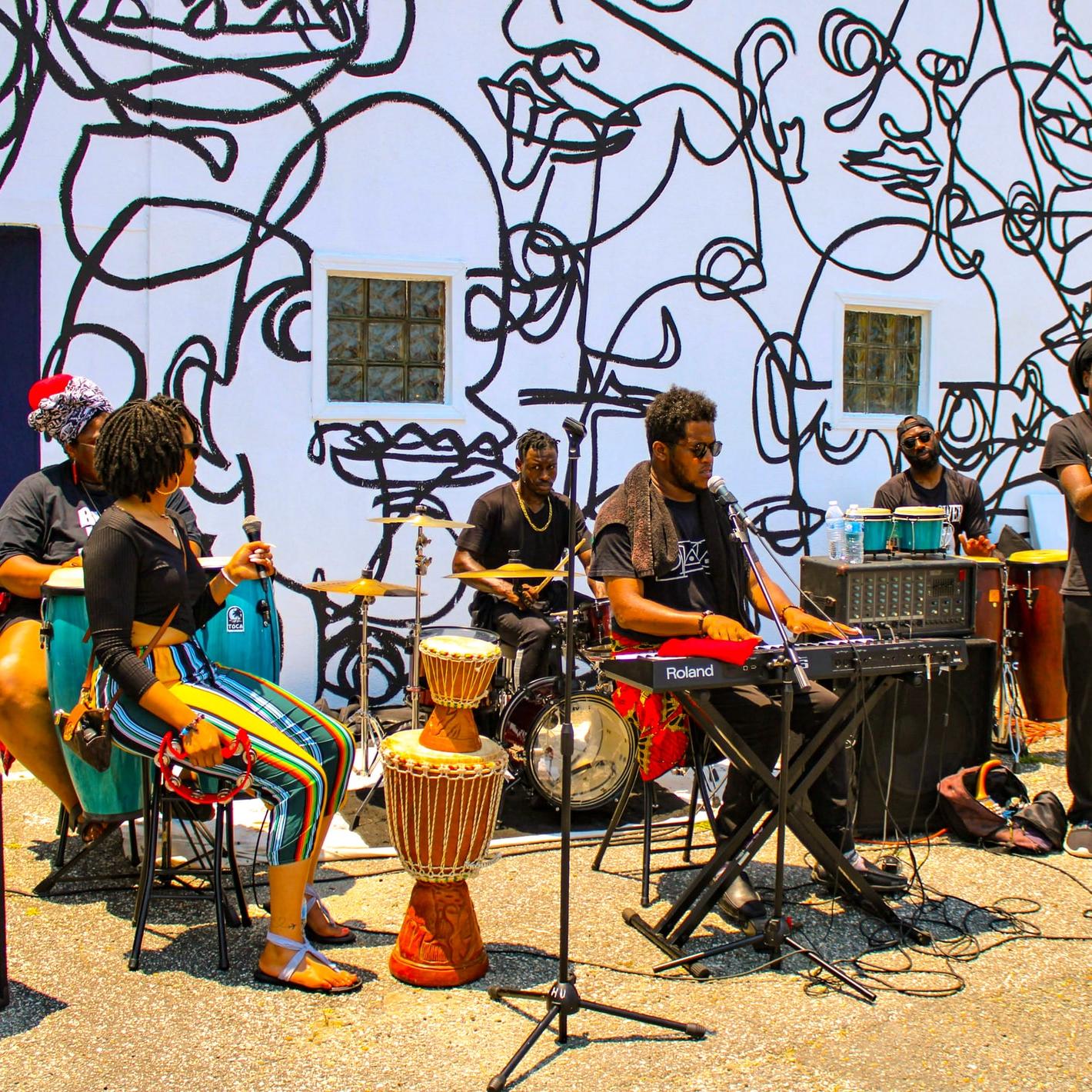
A Juneteenth celebration in Newport News, Virginia, in June 2021.
Federal recognition of Juneteenth came more than 150 years after the holiday began in the Black community — and yet only the second year into official, nationwide status, and a slew of businesses have already tried to capitalize while others have even insulted the community with stereotype-laden offerings.
Walmart led the pack in exploitative marketing this year with its “Celebration Edition” Juneteenth-themed ice cream. The corporation — which is majority-owned by a family of white billionaires — even went so far as to put a trademark logo on the package after the word Juneteenth.
TriplePundit asked DEI expert Kimberly Lee Minor to comment on the fiasco. Her response: “The Walmart Juneteenth ice cream debacle was the latest example of lack of cultural competence as well as lack of diverse power in the room where it happens. Do we think that the slaves had red velvet cake on June 19th, 1865, and is that why they thought it was a great idea to make artificially flavored red velvet ice cream and label it for Juneteenth? It was not only culturally incompetent, but it was also offensive. The problem could have definitely been avoided with more diverse leadership weighing in, but not just weighing in, having authority to make a decision. Being in the room without agency isn’t enough.”

HerSuiteSpot founder Marsha Guerrier broke the issue of leadership and authority down for TriplePundit last March when she described how part of her motivation to start her own company came from the unshakeable feeling that corporate America was just using her to tick a diversity box and wasn’t really utilizing her full set of leadership skills. In a way, such corporate DEI failures mimic what is happening when businesses try to make a quick buck off of Juneteenth as it is an attempt to profit off of Black people and culture while simultaneously failing to create real equity and inclusion at the C-Suite level.
While Walmart has since removed the exploitative ice cream from its freezers, the apology falls flat considering the retailer should have known better to begin with. TriplePundit asked Minor about the appropriateness of non-Black-owned businesses creating products or services with Juneteenth in mind, as in — “Is it ever okay?”
“I believe commercially benefitting from the holiday that celebrates another culture’s recognition of legal freedom is inappropriate. I can’t think of a situation where this would feel right. The savagery and de-humanizing nature of slavery is a dark stain on America that was based on making profits off the backs of a race of human beings,” said Minor.
So, what should businesses interested in recognizing Juneteenth do instead? Minor encourages honoring the holiday instead of exploiting it. “The best way for businesses to approach Juneteenth is to allow their employees to observe the holiday. Provide educational materials to the team to explain the significance of the holiday.”
An Amazon facility could have benefited from such advice in 2020 when it offered its majority-Black employees chicken and waffles in celebration, though the educational piece certainly would have been reversed had management listened to and learned from its workers. Sybil R. Williams, the director of African American and African diaspora studies at American University encourages employers to avoid such culturally insensitive mistakes by having conversations with their Black employees. She is quoted in HR Dive with this advice for starting the discussion: “What is it that you would like to see that furthers actual Black engagement at this company? How can we incorporate Black history in a given subject area or at a given time?”
The Indianapolis Children’s Museum set a horrifying example of a non-profit serving up stereotypes instead of conversation and education. The museum recently sold a watermelon salad as a part of its Juneteenth-themed food court offerings. The non-profit places the blame for the offensive salad on their food court vendor, which suggests that neither entity has taken DEI seriously. Both would do well to take the rest of Minor’s advice personally — “They can also use Juneteenth as a catalyst, if necessary, to make the work culture more inclusive.”
Image credit: Derek Lamar via Unsplash
Juneteenth, 2022: The Good News and Bad News

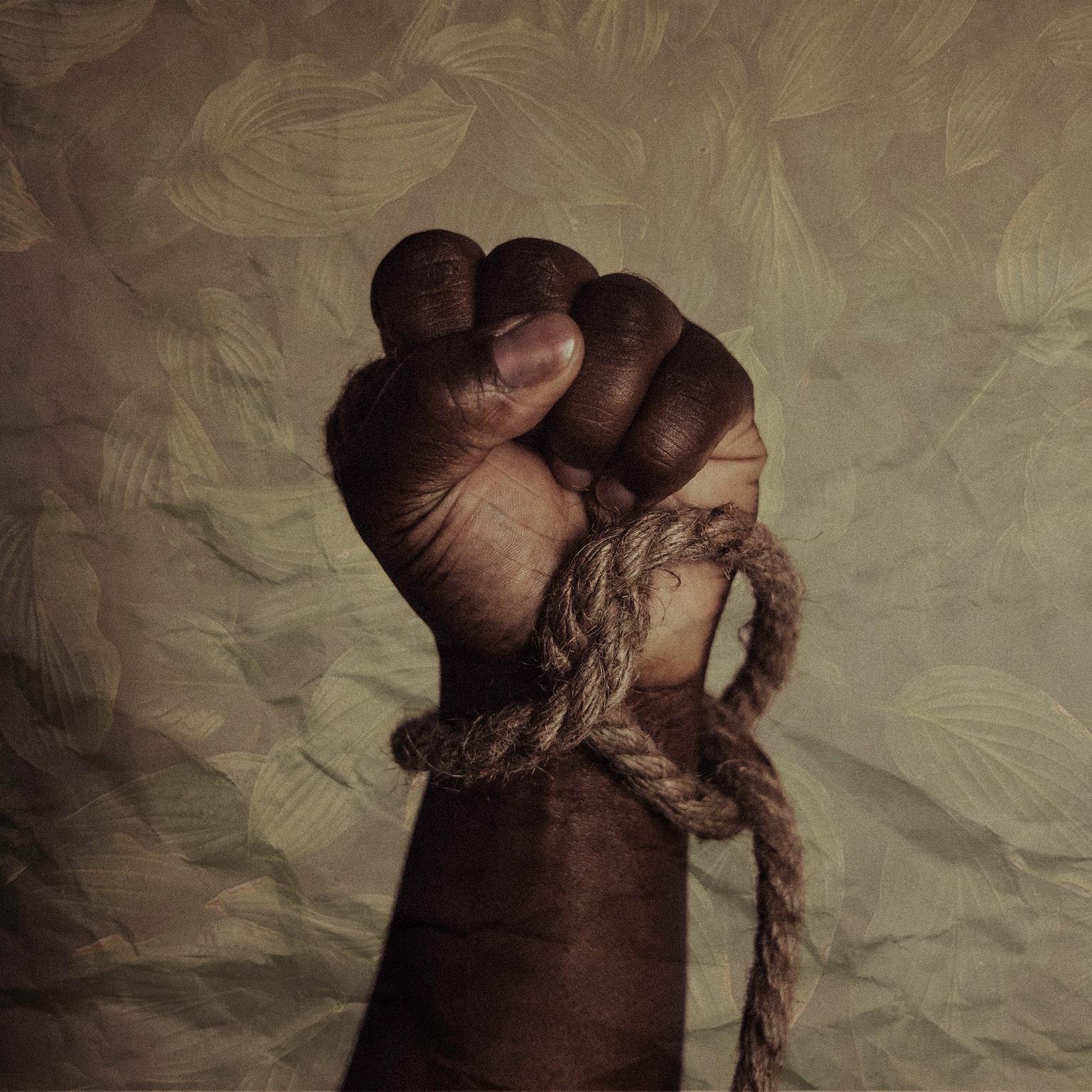
Regarding this year’s commemoration of Juneteenth, it’s appropriate to share the good news; and, there is bad news.
The good news is that on June 19, 1865 (known as “Juneteenth”), Union General Gordon Granger traveled to Galveston, Texas, to announce General Order No.3: Slavery had been abolished. For Texas slaves in particular, the Juneteenth declaration signaled the beginning of a new life. In the context of significant dates in American history, the day freedom is awarded becomes a milestone like no other. And now, the holiday is celebrated in most states.
The bad news is that in the span of the last 157 years, the notion of “being equal” for most Blacks has not been fully realized, maybe not even by half.
In terms of wealth inequality, the median Black household has a net worth of about $24,000, as opposed to the median household figure of $188,000 for white households. And white people own 86 percent of the wealth in the United States versus less than three percent for Blacks.
Black men earn only 87 cents for every dollar a white man earns, and historical data shows that “no progress has been made in reducing income and wealth inequalities between black and white households over the past 70 years.”
In this age of keen focus on diversity, equity and inclusion (DEI), and in spite of self-congratulatory reports and announcements, including those filing in right around this year’s Juneteenth, these numbers seem to suggest that most companies don’t really incorporate pay equity analysis into their program scheme; otherwise, would the percentage be so skewed?
In terms of one of the most consequential indices for predicting upward mobility and wealth in the United States — education — again, the numbers reflect a gap in achievement, likely attributed to lack of inclusion in the systems that produce the greatest rewards.
For the school year 2018-2019, the high school graduation rate for whites was 89 percent; for Blacks the number was 80 percent.
Today, only 57 percent of Black students have access to college-ready courses, compared to 71 percent of white students. And the five-year college graduation rate is 62.2 percent for whites, and 40.5 percent for Blacks.
But the fine points of what encompasses racial disparity for Blacks are not always considered or purposefully ignored.
For example, Blacks are the only minority in American history to enter this country as slaves. And the self-awareness and cultural comfort of traditions once known to the free man or free woman in their own land were rapidly and often violently extinguished. This peculiar status created an immediate and continuing imbalance permeating the nature of the relationship between Blacks and other Americans, especially whites.
Equally injurious is the fact that Black Americans, far before the first Juneteenth, had their start in America as “less than human.” In 1787, the status for Blacks was established by an article in the Constitution called The Three-fifths Compromise, which calculated Congressional representation based on population. Slaves were to be counted as three-fifths of a human being.
And, the negative impact from the practice of name-changing created personal and cultural insecurity within this social group. Leaving out racial epithets, Blacks have been Negros, “colored,” African American, and now Black with a capital “B.”
Whether self-proclaimed or assigned, this unsettling practice has created a diversity of thought and expectations that exists within the Black population that is often ignored. Depending on when you were born, the experience of each generation will factor into behavior and outcomes in the workplace differently; meaning that inclusion is not a one-size-fits all.
Instead of the American dream, after the Civil War came a baptism into the realm of racism in the form of Jim Crow laws which re-segregated the south. The “emancipated” relationship between Blacks and whites was characterized by firehoses, dog attacks and lynching for decades to come. Today this continues in the form of law enforcement brutality and teenagers who intentionally commit mass murder where Blacks live and work.
Abject poverty, illiteracy and the absence of adequate healthcare have become generational for some Blacks.
With this history as a backdrop, 157 years is both a long time to struggle for change without sustained success, yet not enough time to have realized the American dream.
Where Black Americans are concerned, the DEI topic must include these ugly nuances. In fact, all societal groups should be afforded the same consideration of the whole person; that is, if the goal of a corporation is to achieve authentic DEI.
Yet, a 2021 study based on 357 corporate respondents showed that only 40 percent of companies offer DEI-related learning and development opportunities to all employees. Less than half say that their workforce reflects the demographics of today’s marketplace.
Racism is not a white problem, or even a corporate problem. But it lies within the authority of both to effect change. And such a lofty destination as equality demands equal participation. The path to success is realized at the intersection where willingness along with self-determination and personal responsibility meet—factors immune to legislation.
Should Blacks and the rest of the nation celebrate Juneteenth? To the extent that it was a glorious day in 1865 but requires some context to be relevant today: yes.
Image credit: Tasha Jolley via Unsplash
Why Businesses Need to be Alert and Acting On and Beyond Juneteenth
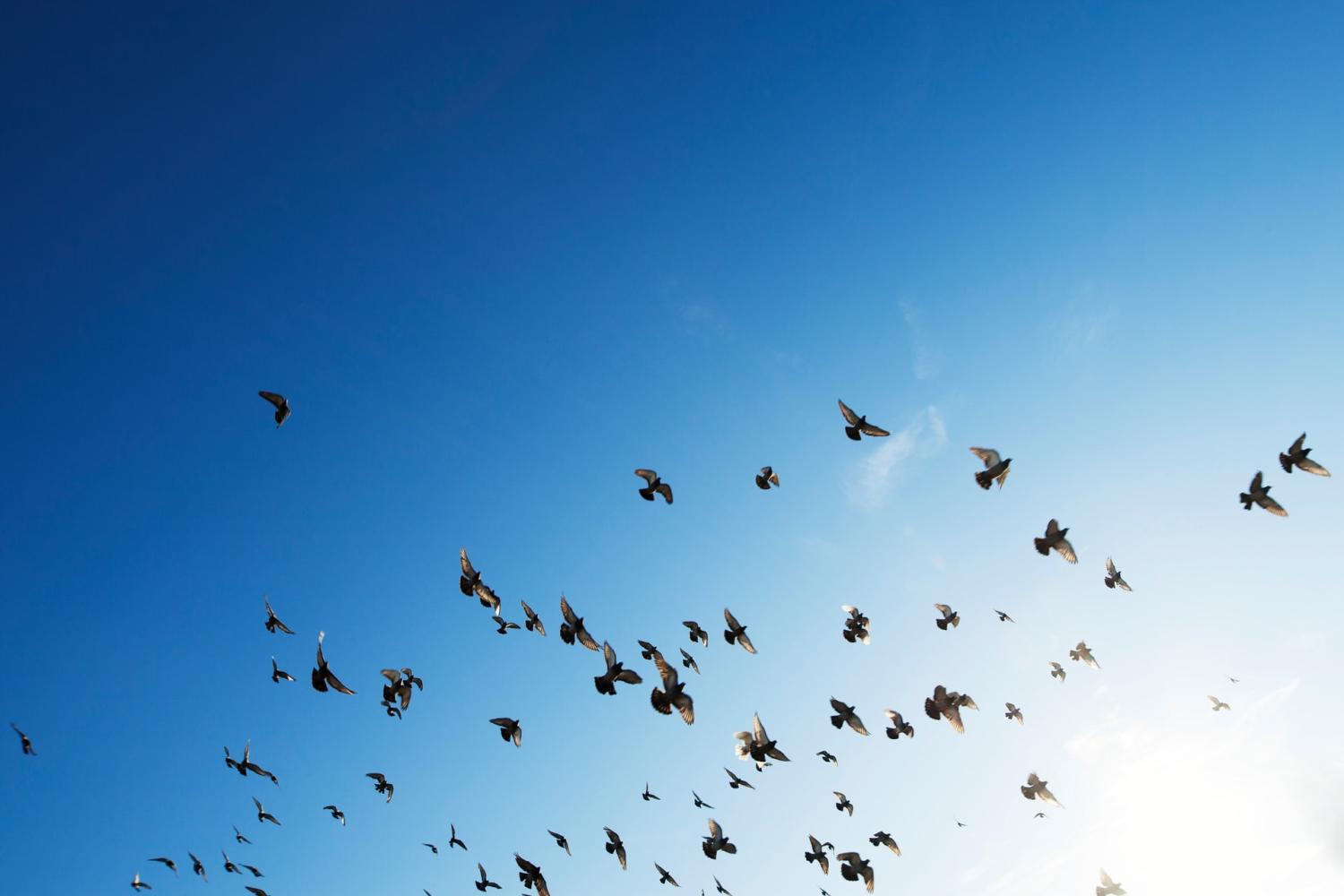
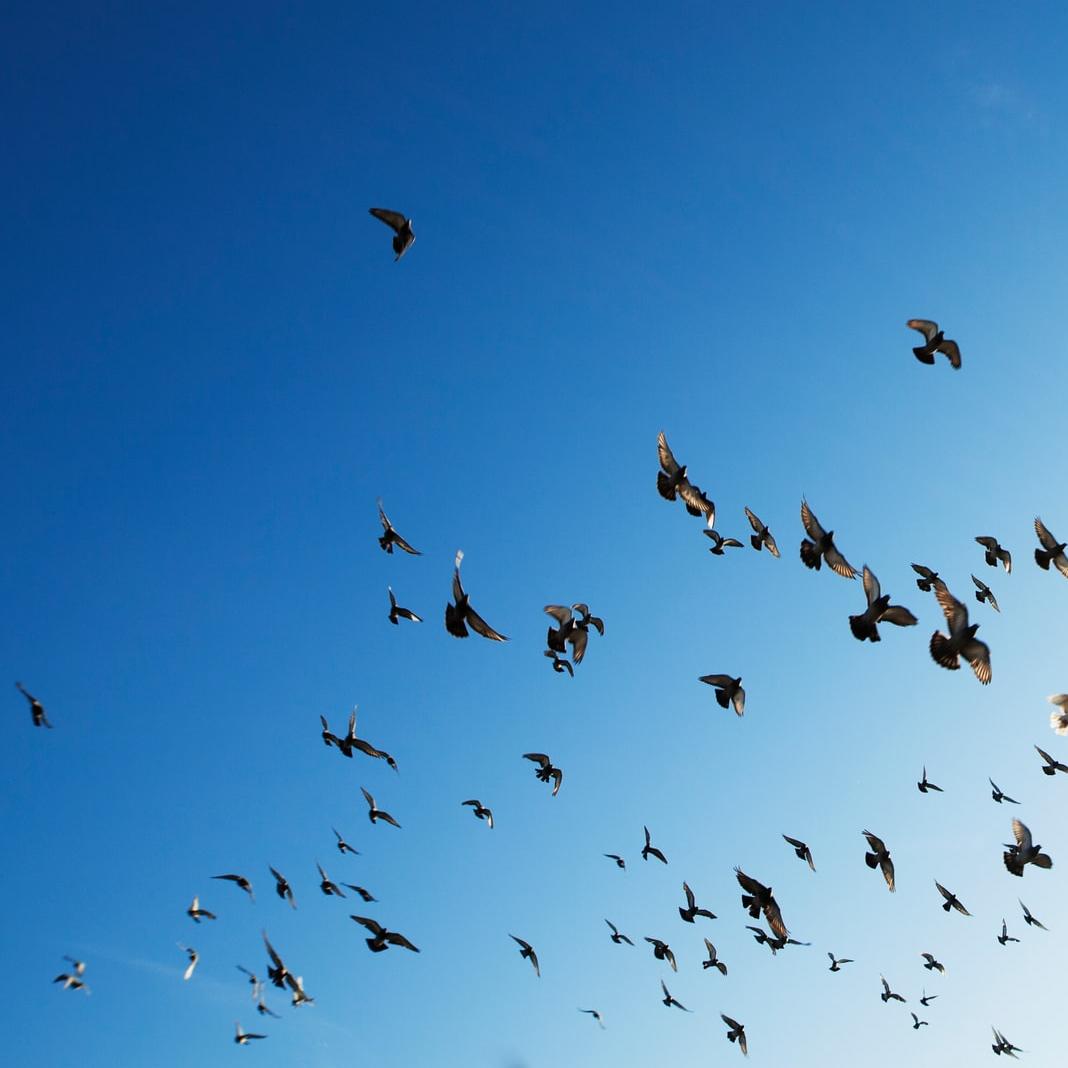
For Black Americans, Juneteenth is about liberation, not a marketing opportunity, says workplace diversity expert and consultant Kim Crowder.
Last year, U.S. President Joe Biden signed Juneteenth into law as a federal holiday. The decision was met with a mixture of celebration and confusion. A holiday that had mainly been celebrated in Black communities, particularly in Texas, was now being introduced to a larger audience. Many Americans were excited to set aside a specific day to celebrate the freedom of those who had been enslaved for hundreds of years. Others reacted with a sense of defiance. We can use Greg Kelly, the conservative television anchor, as an example from this year, who boldly tweeted in all-caps, “I'M BOYCOTTING ‘JUNETEENTH’-NO ONE EVEN KNOWS WHAT IT IS!!!”
Perhaps, without intending to do so, Kelly hit the nail on the head. It’s time for white Americans to learn about Juneteenth — and not just how it came to be, but also how its celebration can help move America forward.
Where Juneteenth came from and where it’s going
Juneteenth commemorates the day the news of the Emancipation Proclamation reached every corner of the United States, the last of which was Texas, when federal orders were read in Galveston about two months after the Civil War ended and two years after the Proclamation was signed. Because Texas hadn’t experienced a big influx of Union troops during the war, it had become known as a safe haven for slavery, even after the war was over. We can only imagine what the news of freedom meant to those 250,000 individuals who had been enslaved and exploited in the Lone Star State. Starting the next year, June 19 was celebrated as “Jubilee Day.”
Today, Juneteenth remains a great cause for celebration. The 13th Amendment was an important step of progress toward equality and equity in the U.S. Those who don’t know what to do with the holiday may consider reflecting on that great ambition of freedom, as well as the continued steps needed to fully realize it.
Finding freedom in the ‘Land of the Free’
The inconvenient truth is that the U.S. is still not fully free. One of the biggest campaigns finding popularity this month is #EndTheException, which calls attention to a few words built into the 13th Amendment that allow the practice of forced labor to continue.
Section 1 of the amendment reads: “Neither slavery nor involuntary servitude, except as a punishment for crime wherof the party shall have been duly convicted [emphasis added], shall exist within the United States, or any place subject to their jurisdiction.”
#EndTheException calculates that every year incarcerated individuals lose over $14 billion in wages through forced labor.
The equality promised by the country's founding documents is also undercut by a racial wealth gap that has kept the proportion of U.S. businesses that are Black-owned to 2 percent, despite the fact that 13 percent of the population is Black.
Juneteenth’s own history points to the fact that progress sometimes requires great patience. Touré, of the popular Touré Show podcast, tweeted this week: “Juneteenth is bittersweet for me. It commemorates enslaved people in Texas finding out that they had been emancipated, great, but they had been emancipated two years earlier and it took two years for the message to reach them. That's tragic.”
But there’s no use waiting around if people aren’t putting in the work. And if achieving greater freedom requires work, that means businesses must be involved.
Does capitalism even have a role to play on Juneteenth?
Perhaps companies should be most alert to how they can get Juneteenth wrong. Type “Juneteenth” into Twitter, and you find tweet after tweet decrying the commercialization of the holiday. We have all heard about how companies like Walmart and organizations like the Children’s Museum of Indianapolis have tried to capitalize on the holiday, and utterly failed.
There are many ways companies can do the right thing, though. On June 6, in a simple sentence, activist Lance Cooper tweeted an important point, “Support Black people before Juneteenth so it won’t look like a performance.” As a company, maybe now is the time to consider: Are you aiming to exploit the holiday to cushion your profits, or are you embracing its call for equity and taking a hard look at your own business, its operations and employees?
In an email to TriplePundit, workplace diversity expert Kim Crowder wrote: “It is not surprising that companies would work to capitalize from this historic day. We have seen this with freedom celebrations such as Cinco de Mayo. The issue is that it is likely for financial gain that does not further the cause of Black liberation through socioeconomic increase. If companies were directly sending all profits to Black U.S. communities or supporting Black businesses, that would be different.
“This is a repeat of why Juneteenth was needed,” Crowder continued. “It is basically commodifying the Black American experience by those who do not share those experiences and who have benefitted from the enslavement of people.”
Companies have their work cut out for them, and Crowder, who works day in and day out to help establish racial equity and inclusion into the fabric of businesses, outlined specific actions leaders can take to commemorate Juneteenth in a real way: “Organizations should be looking beyond one day and focusing on areas such as pay equity, promotions rates, the ability for Black team members’ work to be seen and acknowledged, and partnering with Black businesses regularly, including paying them well for their work.”
“The goal is to work toward Black liberation everyday,” Crowder added. “That is what Juneteenth stands for.”
Image credit: Rowan Heuvel/Unsplash
Giving Toys a Second, Third and Fourth Life with Mattel PlayBack


Into the trash — that’s too often the fate for toys that have been well-used and outgrown or chewed up by pets and broken apart. Dolls, for example, can be too complicated for local recycling facilities to process, which is why toy companies like Hasbro and Mattel have paired up with TerraCycle, a company that aims to “recycle the unrecyclable.”
One year after Mattel launched its PlayBack program, Fisher-Price, one of the corporation’s many brands, has signed on, joining the likes of Barbie, Mega and Matchbox. This means children and parents are able to send back Barbie Dreamhouses, colorful Mega Bloks and now Thomas toy engines for recycling – any product that isn’t electric. The process is simple: toy owners can box up their playthings, print a prepaid label and send their package to Mattel. The company says it will recycle what it can into new toys. Other materials will be downcycled or converted into energy.
We’ve come a long way from the 1940s, when Fisher-Price started the trend of offering entirely plastic products. The novelty of plastic has worn off, though the durability and versatility continue to be hard to beat by metals, rubber or other materials. Still, the environmental issues are increasingly hard to ignore. An estimate from 2021 put plastic production en route to exceed the amount of greenhouse gases that coal-fired power plants produce before the turn of the new decade. And the pollution caused by discarded plastic products finding their way into streams, rivers and larger bodies of water is a growing problem that has already reached 14 million tons a year.
PlayBack provides an opportunity for bottom line benefits
Mattel’s growing PlayBack initiative isn’t just a boon to the environment. It also provides the corporation with an opportunity for innovation and a source of second-hand material. As Pamela Gill-Alabaster, Mattel's senior vice president and global head of sustainability and social impact, describes in a press statement, “The Mattel PlayBack program has been eagerly received by consumers and has provided tremendous learning specific to the durability and disassembly of our products, which will aid in the future design of products made for the circular economy. We are also exploring new technologies in plastic processing and recycling, with our longer-term goal to use materials collected through Mattel PlayBack in future toy production.”
The initiative aligns with Mattel’s sustainability goals, specifically a 2030 aim for completely recycled, recyclable or bio-based plastics in products and packaging. It also keeps the multinational in line with customer preferences. A recent study commissioned by The Toy Association found that the sustainability of toys is important to over three-quarters of parents.
The future of sustainable toys
Initiatives like Terracycle are making it possible to transform industries that are heavily dependent on plastics. In a post about its process, the Trenton, N.J.-based company writes one of the most hopeful statements an environmentalist could read, “The good news is that most rubbish is technically recyclable.” Terracycle even accepts those materials that seem the least redeemable, from the red wax encasing Babybel cheeses to extinguished cigarettes.
But in a world where consumers are increasingly interested in decreasing their waste footprint, recycling may not be the be-all and end-all.
When Steve Rho, the CEO of sustainability-minded Big Future Toys, spoke with HuffPost, his recommendation to families was to rethink consumption habits. After all, while companies like Mattel are leading the way to a circular economy, the toy shelves in big-box stores are still saturated with virgin and non-recyclable plastics.
“This will sound crazy coming from a toy company ― maybe you don’t buy a toy, maybe you substitute an experience, a trip to the zoo or to a great show,” Rho said. “It reduces clutter in your home and you’re not using so many natural resources.”
Image credit: Mattel